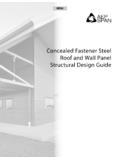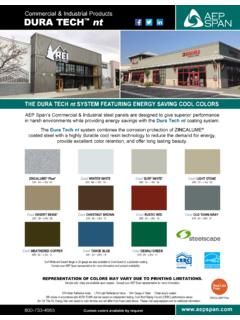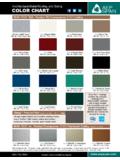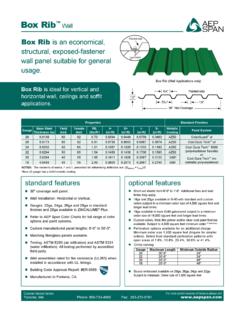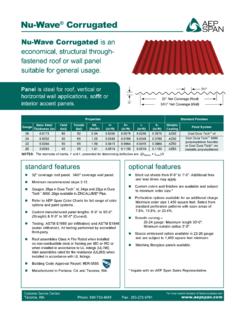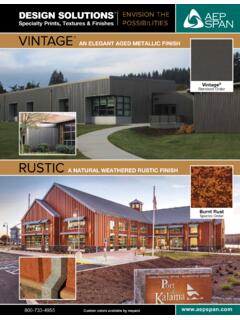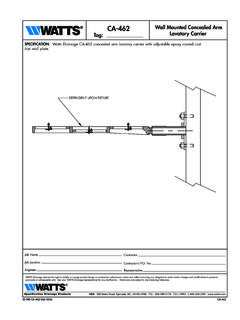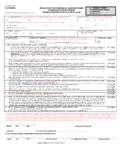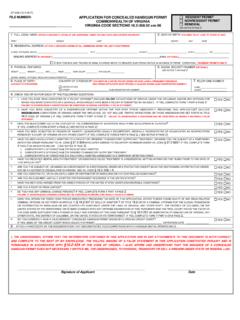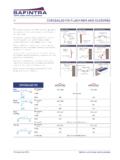Transcription of Concealed Fastener Steel Roof and Wall Panel …
1 MENU. Concealed Fastener Steel roof and Wall Panel Structural Design Guide MENU Table of Contents Introduction .. 2-3. Concealed Fastener Panels Explained .. 2. Concealed Fastener Panel Systems .. 2. Structural Design Requirements .. 4-6. IBC Recognition of roof and Wall Panels .. 4. Product Approval Reports .. 4. Section Properties .. 4. Panel Design Loads .. 6-13. Design Loads .. 6. Application of Design Loads .. 6. Deflection Limits .. 6. Panel Resistance to Inward (Positive) loads .. 7. Panel Resistance to Outward (Negative) loads.
2 8. roof Attachment (Point) Loads onto Metal Roofing .. 10. Photovoltaic (PV) Attachment Considerations .. 12. Drag Loads .. 12. How to Specify Product on Drawings .. 13. Design Examples .. 14-23. AEP Span Design Guide July 2014 1. MENU. Introduction Steel roof and wall panels with their attractive textures and roof or wall covering. Concealed Fastener panels provide finishes are able to provide the long term durability and very clean lines by eliminating the need for exposed fas- environmental protection to resist the most powerful storms teners.
3 Concealed Fastener panels are also often chosen nature can hurl towards buildings. The attachment points over exposed Fastener panels where weather-tightness is of Concealed Fastener panels are hidden, adding to the a concern. Environmental factors driven primarily by tem- sleek, clean look of these panels. This combined beauty perature fluctuation, causes the Panel assemblies to expand and durability can easily be specified by the designer to and contract. For Steel panels, a 1/8 of expansion/contrac- meet a project's architectural and the structural perfor- tion per 10' of Panel length is a common rule of thumb.
4 Mance requirements. With exposed Fastener applications the Fastener mounting hole may stretch or tear, ultimately resulting in leaks. Most The structural design methods presented in this guide fol- Concealed Fastener assemblies allow for thermal expansion low the International Building Code (IBC) requirements through the use of two-piece moveable clips, single piece for Steel roof and wall panels. This document will guide clips that slide within the Panel seam, or for those assem- the designer through common loads applied to the panels blies without clips there are usually Fastener slots that will including; dead loads, live loads, wind and snow loads.
5 Accommodate some thermal movement. The Steel panels resist these loads as a beam, acting in the plane of the roof or wall. The Panel 's resisting capacity for The two most prevalent Concealed Fastener Panel types are inward loads are derived through principles of engineering mechanically seamed and snap together panels. Each option mechanics as a multi-span beam using the Panel 's section offers the designer a choice depending on the project's struc- properties. The outward capacity of the panels is derived tural and aesthetic needs.
6 Mechanically seamed panels gener- through a combination of full scale uplift testing and the ally have a substantially higher structural performance and bet- Fastener capacity that holds the Panel to the substrate. In ter weather-tightness than snap together panels. They can be addition to the inward and outward out-of-plane loads, installed at very low slopes down to as low as 1/4":12. These drag loads are addressed to ensure the panels will not slide panels require extra installation steps to produce the mechani- off the roof .
7 All of these basic concepts are addressed in cal seam and the panels typically utilize two-piece clips with the following sections and culminate in detailed design limited thermal movement. Snap together panels are generally examples. preferred for the most visually demanding architectural applica- tions, and are easy to install. If a Panel is ever damaged they can often be readily replaced. The one-piece clips used with Concealed Fastener PANELS EXPLAINED the snap together panels are often simple in design and provide Steel roof and wall panels fall within two categories; con- unlimited thermal movement.
8 Cealed Fastener or exposed Fastener panels. See Figure 1 for an example of both types. Concealed Fastener panels utilize hidden clips and/or fasteners to attach the Panel to the Concealed Fastener Panel SYSTEMS. substrate. The most common types of Concealed Fastener Concealed Fastener panels can be installed on a wide panels are referred to as standing seam panels. Figure 2 variety of substrates including, but not limited to: lumber, shows common configurations of Concealed Fastener pan- plywood, OSB, cold-formed Steel such as Cees or Zees, els.
9 In contrast, exposed Fastener panels are attached to the Steel deck, hot rolled Steel beams, and even concrete or substrate by driving a Fastener directly through the Panel masonry. Figure 3 shows examples of common roof Panel surface leaving the Fastener head exposed. Exposed fas- assemblies over solid substrates and over open framing. tener panels are also commonly referred to as corrugated, A critical component of a properly designed Panel assembly or through-fastened, panels. is specifying the fasteners that hold the Panel or Panel clip to Concealed and exposed Fastener panels each provide the substrate.
10 The nominal Fastener size is generally defined by the necessary Panel and clip Fastener clearances. Nomi- their own unique look and texture when selected as a Common Concealed Fastener Panel Common exposed Fastener Panel Figure 1: Common Concealed vs. exposed Fastener panels 2 AEP Span Design Guide July 2014 AEP Span MENU. Mechanical seam Snap together seam Integral seam Hooked seam Figure 2: Common Concealed Fastener Panel configurations nal Fastener sizes approved for use with each Panel type are other product literature; this information is nearly always defined within a manufacturer's approval report, in their available on the manufacturer's website.
